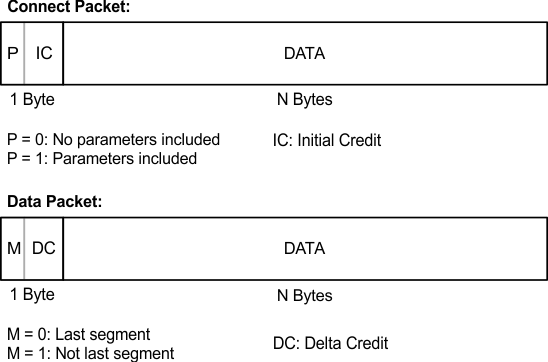SLAA202B February 2005 – December 2018 MSP430F149 , MSP430F149 , MSP430F2252-Q1 , MSP430F2252-Q1 , MSP430F2272-Q1 , MSP430F2272-Q1 , MSP430F2274 , MSP430F2274 , MSP430FG4619 , MSP430FG4619
-
Implementing IrDA With MSP430™ MCUs
- Trademarks
- 1 Introduction
- 2 Hardware Description
- 3 Software Description
- 4 PC Demonstration Application
- 5 IrDA Protocol Basics
- 6 IrDA Communication Diagram
- 7 Frame Exchange Log
- 8 References
- Revision History
5.5 Tiny Transfer Protocol (TTP)
Tiny transfer protocol (TTP) provides a higher level of flow control than that of the IrLAP layer. It makes use of the multiplexing capabilities of the IrLMP layer to enable two different LMP connections to use the same underlying IrLAP connection without the loss of any data in the process. The way in which TTP is able to provide this service is by issuing a credit to each party. This credit is directly proportional to the buffer space that one side has. Sending data causes one credit to be used. Periodically, the receiver issues more credit to the sender to keep receiving the intended data. TTP also has segmentation and reassembly capabilities; this feature is not described in this application report.
TTP has its own set of primitives that describe the behavior of this layer. The primitives for TTP are:
- Connect services
- Disconnect services
- Reliable or unreliable data services
- Local flow control services
Two frame formats are used in TTP. Both add overhead to the User-Data field of the IrLMP
frame. These frames, as shown in Figure 20, establish a connection where initial credit (IC) is issued or transfer data where delta credit is accounted for. Delta credit (DC) is the amount of data frames that a device is allowed to send before it has to turn the connection over to another device.
 Figure 20. TTP Frame Formats
Figure 20. TTP Frame Formats